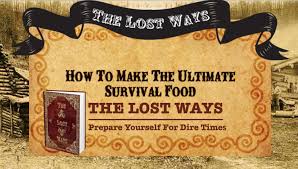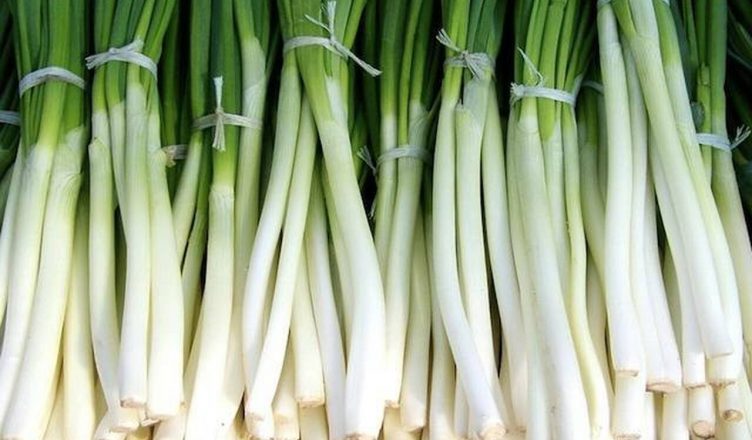The food garden, you could say, is a gateway garden. For is there anyone who does not savor freshly picked
lettuce, or look forward to the first ripe tomato of summer? Millennials and foodies are discovering the excitement of gardening through food.
This might play out in balcony containers full of herbs and peppers, or in a big backyard vegetable garden. No matter what form a person’s first garden takes, it has the potential to forge a lasting relationship with real food, with the natural world, and with the cycles of the seasons.
It is important that this relationship start off on the right foot. A garden is not a once-and-done affair. However,
given attention, care, and yes a little love, it will bring lasting rewards, both in the short- and long-term.
So how do you measure success? A successful food garden is one that yields crops throughout the season.

Planting for a continuous harvest can be tricky for a novice, but it can happen with a little guidance. A step-bystep approach breaks the process down into one that is far less daunting, and easily achievable.
Step 1: CHOOSE YOUR CROPS
Limiting the size can make a garden space more easily managed and less time-consuming—an important
consideration for a busy gardener. And you can, in fact, get a varied yield from a modest space with a little
forethought. Begin by choosing some crops that will produce food in cool weather, and others that will mature in
the heat of summer. Your goal is to have fresh food on your table from late spring through late fall, and even into
winter. This list includes some of the more popular crops:
Choose 2 to 4 Early Spring :
Arugula,Carotts,Kale,Lettuce,Peas,radishes,Spinach,Turnips
Choose 2 to 4 Mid Spring :
Beets,Broccoli,Cauliflower,Chard,Cilantro,Onions
Choose 2 to 4 Summer :
Beans,Corn,Cucumber,Eggplant,Pepper,Tomatoes,Squash
Choose 2 to 4 Late Summer to Fall
Beets,Carrots,Kale,Collards,Leeks,Parnips,Turnips,Radishes
*In mild winter areas, other brassicas, greens and Asian vegetables can be planted also.
Choose 2 to 4 Late Summer to Winter :
Arugula,Cilantro,Lettuce,Spinach,Garlic ( plant in octomber )
Spring onions, baby lettuce, and salad turnips are three crops that can be sown directly into the garden in spring
and harvested in less than two months. This leaves ample time for another crop.
Step 2: PLOT SUMMER CROPS
Although you will not be planting your summer crops until after the frost date for your region, it is necessary to
know from the start where they will occupy space in the garden. No doubt about it, summer crops like tomatoes
and squash are the space hogs of the garden, but realize that their growth is slow at first. They take a month or
more to size up, and during that month you can use that space for other plants, so long as those plants are
harvested by mid-summer. Place individual upright stakes in the ground where plants such as tomatoes, peppers and squash will be planted. Use stakes and string to mark future row crops.
This garden plan includes three summer crops: tomatoes, peppers, and beans. These will not be planted until after the frost date,
but you need to know where they will be situated even before you plant your first spring crops.
Spring onions, baby lettuce, and salad turnips (a.k.a.Hakurei turnips) are three crops that can be sown directly into the garden in spring and harvested in less than two months. This leaves ample time for another crop.
Step 2: PLOT SUMMER CROPS
Although you will not be planting your summer crops until after the frost date for your region, it is necessary to know from the start where they will occupy space in the garden. No doubt about it, summer crops like tomatoes and squash are the space hogs of the garden, but realize that their growth is slow at first. They take a month or more to size up, and during that month you can use that space for other plants, so long as those plants are harvested by mid-summer. Place individual upright stakes in the ground where plants such as tomatoes, peppers and squash will be planted. Use stakes and string to mark future row crops.
This garden plan includes three summer crops: tomatoes, peppers, and beans. These will not be planted until after the frost date but you need to know where they will be situated even before you plant your first spring crops.
Tips for Summer Crop planning:
Tomatoes can be paired to save space in a small garden.Two tomatoes planted about 18 inches apart will yield more fruit than a single plant. The cages or stakes can be harnessed together for stability.
Bush beans planted over time rather than all at once,yield a steady supply.Every two weeks,plant a portion of your bean seeds.
Corn is not a good choice for the small garden.Because it is wind pollinated,it should be planted in blocks,and a minimum block of 4×4 plants,each at least a foot apart,is best for pollination.
Cucumbers can be grown vertically on trellises, if space is limited.
Squash,whether summer or winter,consumes a lot of space.For a small garden,choose bush varieties.

Step 3: PLOT EARLY SPRING CROPS
Peas, and greens such as lettuce, arugula, and spinach, can be seeded into the ground early in spring, as much as two months prior to the warm-weather crops. Some greens, notably kale, will soldier on through summer and into the fall, but most will send up flowering shoots as soon as the weather warms, signaling that their usefulness as table greens has come to an end. Carrots and turnips can be seeded in spring also, and can be harvested astender babies, or as full-sized roots. Choosing fast-maturing varieties—baby bok choy, tatsoi, salad turnips, and baby carrots and beets, for example—will offer more opportunities for succession planting.
Some early spring crops, such as greens, peas, and radishes can use space that will later be occupied by summer crops.By the time the summer plants size up, the spring crops will have been harvested.
Step 4: PLOT MID SPRING CROPS
Broccoli and cauliflower are generally started indoors, or you can purchase them as young plants. Put them in the ground in mid-spring, and watch for pests, particularly cabbage worms, which can do considerable damage. Root crops, such as beets and carrots, can be planted in succession, just like beans.
In mid-spring, when you plant crops such as broccoli, beets, and onions, summer crops are still only in your plan-not in the garden.
Tips for Spring Crop planning:
Lettuce,Arugula and other greens can be seeded in wide rows and cut as baby greens. Scatter the seeds about an inch apart in 8-inch rows.They will re-grow for a second and sometimes a third cutting.
Radishes mature so quickly that you need not put them on the plan.Just sow seeds about an inch apart in empty spaces in the garden,or along the edges.
Cilantro loves cool weather and bolts quickly in the heat.Don’t be too quick to remove it, however.The flowers attract pollinators and beneficial insects.
Onions make good companion plants for kale,cabbage,chard and lettuce.To save space you can plant onion sets in close proximity to other crops.
Kale is an all-season crop,often staying harvestable into early winter.
STEP 5: PLOT LATE SUMMER TO FALL CROPS
Summer is in full swing, and you are pulling buckets of tomatoes, peppers, and beans from your garden. Peas are long gone, early plantings of lettuce, arugula, broccoli, and onions have been harvested, and the first bean sowings are no longer productive. Some root crops may remain to be harvested, but many of them have been removed as well. This leaves ample space for late summer crops. Be sure to fortify the soil with compost or a dose of organic fertilizer before seeding your fall crops of roots and greens.
Late summer is an ideal time to sow a second crop of carrots, beets, and turnips. Leek plants, started in containers in early summer,can be planted in late summer also. Other candidates for summer planting include parsnips (from seed) and collard seedlings .
Tips for late Summer Crop planning:
Lettuce may not germinate well in the heat of the late summer garden,but this should not stop you from sowing it (as well as bok choy ,kale,and other greens) indoors.
Plant seedlings in the garden when the weather cools. Carrots planted in late summer can be harvested through out the fall and in to the winter.Cover them with straw when the temps dip below freezing.
Kale can be planted for baby greens any time during the growing season.
Parsnips are sweetest when dug in very early spring.
Collards love cool weather.Planted in late summer they make great fall and early winter braised greens.

STEP 6: PLOT FALL CROPS AND COVER CROPS
When frost kills your summer crops, there will be plenty of space in the garden. This is your chance to take advantage of the still-warm soils and the relatively balmy days. Greens love fall weather! Often, gardeners have diverted their energies to other pursuits by the time of the first frost, missing out on a great growing opportunity.
This final step is just as important as all the rest—for the health of the soil, as well as for an extended harvest.
Spinach, lettuce, arugula, and other greens will produce well into fall. Sow seeds or plant seedlings as soon as the daylight hours begin to shorten and the nights begin to cool. Garlic is one of the easiest crops to grow. Pick up a few cloves at the local farmers market, break them apart, and plant about 2 inches deep in October. In the empty spaces of your garden, plant a cool season cover crop, such as oats or rye.
Tips for Fall Crop planning:
Lettuce and Arugula can be direct sown in late summer if there is a break in the weather.Or plant seedlings.
Spinach needs cool soil to germinate . It may not have time to mature enough for fall picking but don’t despair.Cover plants with straw and they will often survive the winter and produce extra early in spring.
Salad Turnips (also known as Hakurei turnips) are a very quick crop and an excellent fall vegetable.
Cilantro,in many regions,prefers fall growing to spring, as the shorter days will not cause it to bolt.
Cover Crops provide sustenance for soil organisms,and maintain the fertility and structure of the soil.
source : Home Garden



